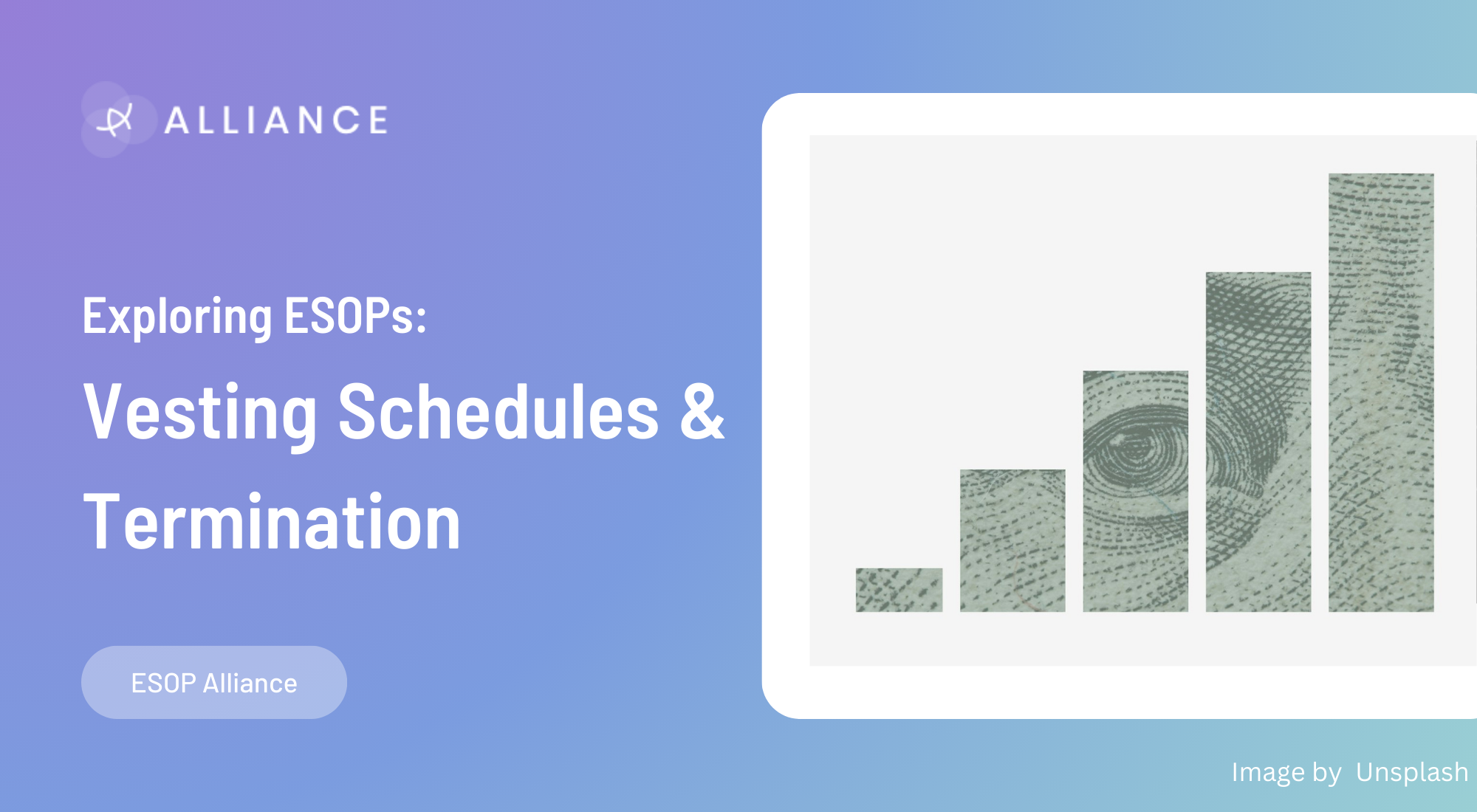Exploring ESOPs: Vesting Schedules and Termination

Vesting schedules and termination conditions are critical parts of ESOP agreements. They dictate stock ownership and rewards for employees. For companies, crafting clear, fair, and motivating ESOP agreements is essential to leveraging these plans for talent retention and alignment of interests. For employees, a deep understanding of these clauses is crucial for navigating their career and effective financial planning.
Both parties need to consider these elements carefully and clearly. They should ensure that the path to shared ownership is good for both and fits with long-term goals. Let's take a look more closely at some of the factors to consider when it comes to vesting schedules and termination:
Aligning Interests for Long-Term Success
ESOPs are a great way for companies to align their employees' interests with the business's long-term success. However, shared ownership has complex clauses. This is especially true for vesting schedules and the effects of termination on stock ownership. Understanding these is crucial for both employers and employees entering into ESOP agreements.
The Vesting Schedule: A Timeline to Full Ownership
At the heart of many ESOP agreements lies the vesting schedule, a predefined timeline that determines when employees earn full ownership of their stock options. This schedule can vary a lot. Some companies use a gradual, linear approach. Others use a cliff vesting schedule. With the cliff schedule, employees become fully vested after a set period. For tech startups it's often four years. The vesting schedule choice affects employee retention and motivation. It ties getting financial benefits to staying with the company.
Implications of Termination: Fine Print Matters
Equally critical is the understanding of how termination—whether voluntary or involuntary—affects an employee's stake in the company. ESOP agreements must clearly outline when employees may lose their unvested shares. They must also cover when employees may be forced to sell their vested shares back to the company. These conditions can greatly affect the employee's finances. They also affect their relationship with the company.
For employees, the stakes are high. Termination of employment can lead to a loss of both income and potential future gains from stock ownership. So it's essential employees understand the vesting schedule. They must also know the conditions under which they may have to sell their shares back to the company and at what valuation. This understanding is crucial. It helps people make informed decisions about their careers and finances.
The Role of the ESOP Agreement
The ESOP agreement serves as the cornerstone of understanding between the company and its employees. It should clearly explain the vesting schedule, conditions under which employees might forfeit their shares, and the process for selling shares back to the company, including how the share price will be determined. Both parties must understand these elements. They ensure the ESOP serves its intended purpose: aligning interests and rewarding commitment.
